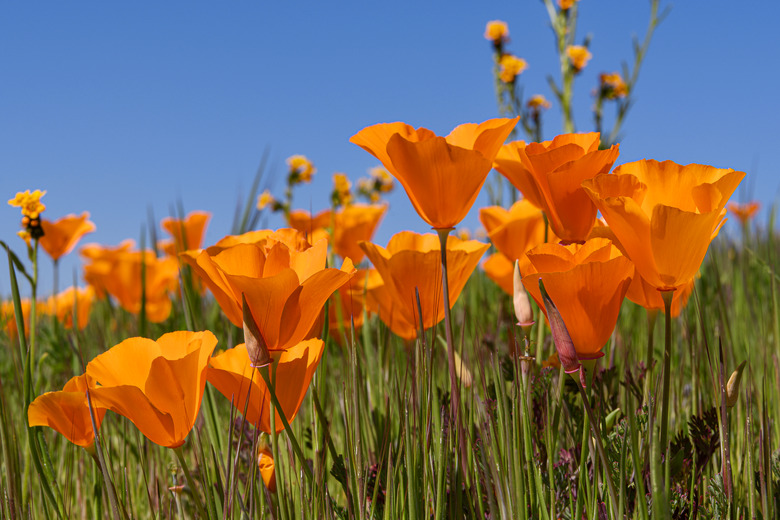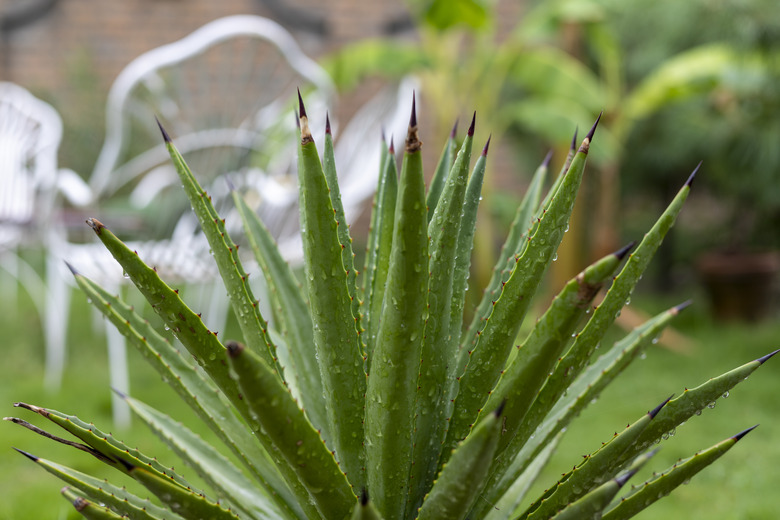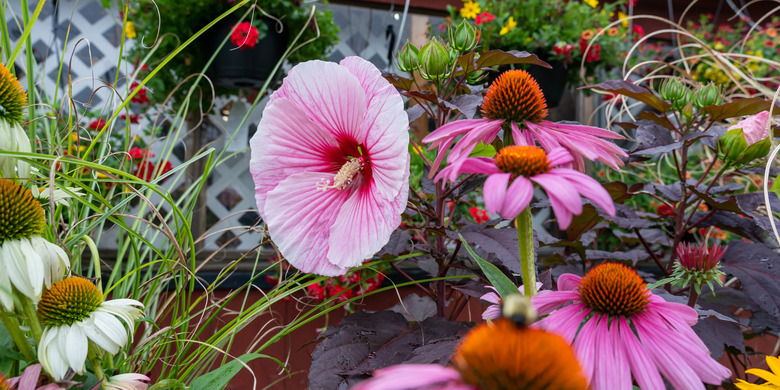The Best Native Plants For Landscaping: A State-By-State Guide
Native plants are plants that have historically grown in a given region without human introduction. Before we started fencing off our yards and planting exotic and invasive species in our gardens, each geographical area's natural ecosystem provided a harmonious balance of flora and fauna. Over the course of thousands of years, the plants in these ecosystems adapted to the area's unique weather patterns, soil, pests, and diseases. Because they are accustomed to the conditions of their home range, native plants are easier to grow and are better for the environment, making them an ideal solution for any home landscaping plan.
Benefits of Native Plants
Benefits of Native Plants
Whether you incorporate a handful of preferred native plants or go all out to create a conservation-friendly garden, there are many benefits to adding localized flora to your yard. Native plants typically use less water and fertilizer than non-natives because native plants are already naturally adapted to the local soil and climate conditions. For example, using localized plants that prefer wet conditions can help prevent erosion because they often have longer roots for securing soil and slowing rainwater runoff.
Native plants also tend to be more resistant to pests and diseases, though invasive organisms can still present serious problems. At the same time, these plants can help support beneficial insects and animals by providing precisely the types of food, shelter, and nesting materials the wildlife have evolved to utilize. Native plants are essential for butterflies, which lay their eggs only on a select number of plants. These plants then provide sustenance for newly hatched caterpillars.
Aside from supporting the environment, the fact that these plants are naturally suited to your region means that you'll put in less work watering, fertilizing, and fighting off pests and pathogens. Less work means you'll have more time to relax and watch the butterflies, birds, bees, lizards, and other critters enjoy your garden.
Native Plants by State
Native Plants by State
Always research a plant's growing requirements before deciding to add it to your yard. Just because a plant is from your region doesn't mean it's suited to the exact planting conditions on your property. For example, a shade-loving plant that grows near water won't do well on a sunny, arid hillside.
When looking for plants well suited to your region, this list of native plants from each state is an excellent place to start. And because plants don't observe human-drawn borders, consider growing plants from bordering states, as nearby states may share many of the same regional flora and fauna as your area.
Here are the best native plants for landscaping by state.
The Best Native Plants for Each State
|
State |
Good Native Landscaping Plants |
|
Alabama |
Eastern Red Columbine Butterfly Weed Crossvine American Beautyberry Atamasco Lily |
|
Alaska |
Columbian Monkshood Saskatoon Serviceberry Pacific Anemone Yellow Marsh Marigold Jacob's Ladder |
|
Arizona |
Buttonbush Desert Sand Verbena Scarlet Bouvardia Arizona Mariposa Lily |
|
Arkansas |
Turk's Cap Leadplant |
|
Northern California (Cool and Rainy) |
Oneleaf Onion Van Houtte's Columbine Rose Rockcress Beach Sagebrush Small Camas |
|
Southern California (Hot and Dry) |
California Poppy Greenleaf Manzanita Desert Marigold California Fuchsia |
|
Colorado |
Red Baneberry Dwarf False Indigo Colorado Blue Columbine Colorado Four O'Clock |
|
Connecticut |
White Baneberry Black Cohosh Purple Giant Hyssop Wood Anemone Purple Milkweed |
|
Delaware |
White Snakeroot Common Serviceberry Swamp Milkweed Alternateleaf Dogwood |
|
North and Central Florida (Subtropical) |
Florida Hobblebush Splitbeard Bluestem Florida Greeneyes Florida Adder's-Mouth Orchid Pinewoods Milkweed |
|
Southern Florida (Tropical) |
Everglades Palm Bandanna of the Everglades American Crinum Lily Pond Apple |
|
Georgia |
Bottlebrush Buckeye Jack in the Pulpit Blue Wild Indigo Georgia Frostweed |
|
Hawaii |
Nau Ilima Papa Hinahina Aalii |
|
Idaho |
Jones' Columbine Heartleaf Arnica Prairie Sagewort Sulphur-Flower Buckwheat |
|
Illinois |
Autumn Onion Yellow Marsh Marigold Bluebell Bellflower Purple Joepyeweed |
|
Indiana |
Fireweed Closed Bottle Gentian Spotted Geranium Feathery False Lily of the Valley |
|
Iowa |
Whorled Milkweed Longbract Wild Indigo Gray Dogwood Showy Tick Trefoil Dutchman's Breeches |
|
Kansas |
Downy Hawthorn Black Samson Tall Blazing Star Prairie Ironweed Prairie Blazing Star |
|
Kentucky |
Scarlet Beebalm Kentucky Coffeetree |
|
Louisiana |
Blue Mistflower Evening Rain Lily Prairie Larkspur Rose Vervain Wild Blue Phlox |
|
Maine |
White Colicroot Showy Tick Trefoil Cinnamon Fern Birdfoot Violet |
|
Maryland |
American Holly Common Ninebark Coralberry Deerberry |
|
Massachusetts |
Dwarf Witchalder Great Laurel Swamp Rose Crimson-Eyed Rose-Mallow |
|
Michigan |
Witch-Hazel Shrubby St. John's-Wort Michigan Lily Common Winterberry |
|
Minnesota |
Meadow Garlic American Bellflower Prairie Blue-Eyed Grass Shreve's Iris Largeflower Bellwort |
|
Mississippi |
Mississippi Penstemon Buckwheat Tree Clasping Coneflower Pitcher Sage |
|
Missouri |
Missouri Violet Plain Gentian Common Sneezeweed Clayton's Sweetroot Eastern Hop-Hornbeam |
|
Montana |
Black Hawthorn Purple Monkeyflower Heartleaf Four O'Clock Tufted Evening Primrose Yellow Bee-Plant |
|
Nebraska |
American Hazelnut Smooth Solomon's Seal Bloodroot Compassplant Golden Zizia |
|
Nevada |
Sideoats Grama Western Spring Beauty Pink Plains Penstemon Western Thimbleberry |
|
New Hampshire |
Creeping Snowberry Eastern Teaberry Ostrich Fern Twoleaf Miterwort |
|
New Jersey |
New Jersey Tea Cup Plant Shrubby Five-Fingers Mayapple |
|
New Mexico |
Parry's Agave Cliff Fendlerbush Ocotillo Prairie Coneflower |
|
New York |
Tulip Tree Great Blue Lobelia Hairy Penstemon |
|
North Carolina |
Herb-of-Grace Carolina Springbeauty Carolina Jessamine Eastern Sweetshrub |
|
North Dakota |
Wood Lily Wholeleaf Rosinweed Common Snowberry White Heath Aster Purple Meadow-Rue |
|
Ohio |
Pawpaw Ohio Spiderwort Eastern Shooting Star Burningbush |
|
Oklahoma |
Woodland Pinkroot Jerusalem Artichoke Winecup Yellow Sundrops |
|
Oregon |
Sweet After Death Nodding Onion Western Columbine Sagebrush Mariposa Lily Holly-Leaved Barberry |
|
Pennsylvania |
Pennsylvania Sedge Plains Coreopsis Scaly Blazing Star Spotted Wintergreen |
|
Rhode Island |
Flowering Dogwood Staghorn Sumac Highbush Blueberry Cranberry |
|
South Carolina |
Maroon Carolina Milkvine Carolina Ash Carolina Azalea Cardinal Flower |
|
South Dakota |
Flat-Top Goldentop Old Man's Whiskers Purple Meadow-Rue Broadleaf Cattail |
|
Tennessee |
Pignut Hickory Bristly Locust |
|
East Texas (More Humid) |
Texas Redbud Scarlet Rosemallow Comfortroot Texas Spiderlily Texas Bluebonnet |
|
Texas Panhandle/Western Areas (More Arid) |
Pigeonberry Texas Bluebell Purple Leatherflower Texas Madrone Featherplume |
|
Utah |
Arrowleaf Balsamroot Utah Serviceberry Silverweed Cinquefoil Desert Sweet Mountain Monardella |
|
Vermont |
Hobblebush Shrubby Five-Fingers Black Cherry Vermont Blackberry |
|
Virginia |
Tall Thimbleweed Virginia Strawberry Virginia Waterleaf Fall Obedient Plant Bitternut Hickory |
|
Washington |
Vanillaleaf Olympic Larkspur Alpine Twinpod Grand Collomia |
|
West Virginia |
Virginia Bluebells Gray Goldenrod Virginia Springbeauty Virginia Creeper American Strawberry Bush |
|
Wisconsin |
Eastern Leatherwood Paleleaf Woodland Sunflower Low Prickly Pear Slender Beard-Tongue |
|
Wyoming |
Wyoming Indian Paintbrush Purple Prairie Clover Rubber Rabbitbrush Aspen Fleabane Soapweed Yucca |


